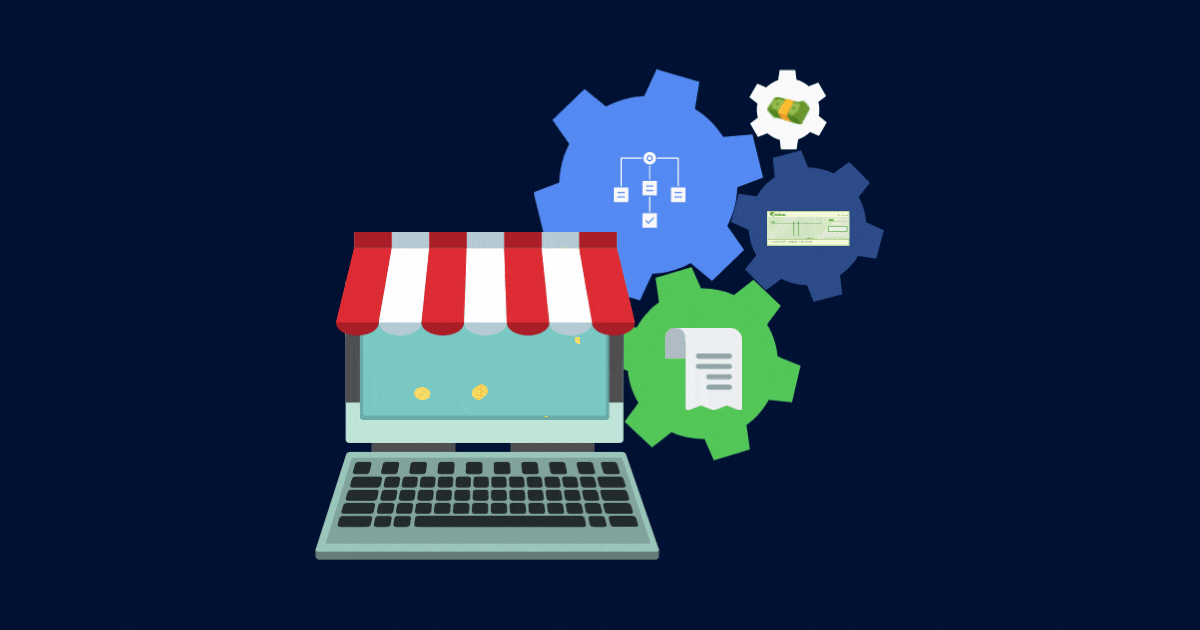
Many problems for small businesses and startup owners relate to cash flow. In fact, 82% of small businesses fail due to cash flow problems.
Common cash flow problems include:
- Not having enough cash in your bank account to pay bills in an emergency
- Your expenses exceeding your cash balance at any time
- A mismatch in the timing of bill payments and payment collection from clients
As an example, take a service-based business, such as a law firm:
On January 1, multiple bills, such as rent, subscriptions, and payroll, are due. But if you haven’t received payment from your clients, which, let’s say, will come due on January 31, you have a cash flow issue.
In this example, there is a cash flow timing issue between when you get paid by your clients (January 31) and when your bills come due (January 1).
You need to find a solution for this cash flow timing issue; otherwise, you’ll find yourself in a pickle or be forced to use your personal funds to pay your bills.
2 Types of businesses struggle with cash flow problems
Two types of businesses commonly struggle with cash flow problems because of how they structured their business.
Service-based businesses bill clients in the future for work they are doing now. They may do the work today and not bill clients for 30 to 90 days, which creates a cash flow crunch. Payment delays can create problems until the company can build up a cash flow buffer.
Businesses with inventory, such as e-commerce, direct-to-consumer, and retail, buy and hold stock in advance purchased with cash. These businesses don't receive money until they sell the inventory. Holding inventory is unavoidable. But carrying too much inventory or turning it over too slowly ties up cash that needs to be available to pay for expenses.
5 Ways to improve business cash flow
-
Ask for a deposit
A deposit is a down payment on goods or services. When you ask for a deposit, it’s an agreement that the customer will pay the total price of the service when it’s completed. Instead of billing in full when the work is complete, a deposit will allow you to have funds to pay your bills.
Offering a discount for paying early is another way to make it easy to receive payment upfront, and everyone loves an incentive!
-
Send your invoices quickly
Prompt invoicing is one of the easiest ways to improve cash flow. In theory, you'll get paid sooner when you send your invoices quickly. You can also set up automated payment reminders for your clients, so payments don't get missed.
Your invoices should show the amount, payment terms, and explicit instructions on how to pay. You can use Xero or QBO to send your invoices.
Alternatively, you could outsource your Accounts Receivable (also known as “A/R”) to a firm like Vertical CPA. Outsourcing A/R removes you from the process of sending invoices and following up with your clients. Instead, Vertical CPA can:
- Prepare and send invoices to your clients from your accounting software (Xero or QBO)
- Follow up with your clients on collections and late payments
- Reconcile payments received in your bank account to the invoices sent
You will never have to stress about invoicing your clients again!
-
Bill frequently
Billing frequently is a technique that can help you improve your cash flow. It involves billing your clients regularly instead of at the end of a long project. Or try setting specific milestones and bill once you achieve each milestone.
Fixed pricing is a good example where you bill clients monthly (if this suits your business) rather than hourly. Fixed pricing also saves you time figuring out what and when to bill each time and lets the client know what they'll pay each month.
-
Make it easy to pay
There are several ways to make it easy for your customers to pay you. One of them is offering your clients multiple ways to pay, including automatic withdrawals from their bank account or their preferred credit card.
While making it easy to pay, it's essential to be upfront about penalties for paying late.
-
Get a line of credit
If options 1– 4 above aren't helping, a credit line is another way to access money without borrowing long term.
You can go to a bank or other lending institution to get a credit line and to use the funds when needed as a flexible loan.
Draw the funds you need up to a specific limit on the credit line, pay it back, and take out more as a revolving credit.
A real-world example: Marketing agency
The consequences of billing too late
Jeff runs a marketing design agency. His agency does custom work for clients that take anywhere between 60 to 120 days to complete. He typically bills his clients upon project completion, i.e., at the end of each project.
Cash flow problem
Since Jeff bills his clients at the end of each project, he only gets cash in his business between 60 to 120 days from today.
The challenge is that from day 1 to day 59, Jeff still must pay for business expenses that use up cash. These expenses include payroll, rent, subscriptions, etc.
Jeff was getting stressed out because he had to pay these expenses from out-of-his-pocket cash or a credit line before collecting a single dollar from his customers. He spoke to his accountant about his cash flow problem.
Solution
His accountant suggested that instead of waiting for 60 to 120 days to get cash from his customers, Jeff could:
Ask for a deposit upfront
Jeff could ask for a deposit worth 20% of the value of each project upon signing a contract. This would help Jeff get some cash upfront to cover expenses for each project as he begins the work.
Bill frequently
Jeff could bill his clients for work done every 30 days instead of waiting to bill for the entire project at the end of the 120 days, allowing Jeff to get cash more frequently and sooner.
By implementing these two strategies to improve cash flow, Jeff could get cash in his business sooner to pay for expenses and reduce his stress levels.
ABOUT VERTICAL CPA
We provide virtual CFO, bookkeeping, and tax services to startups and SMEs. We understand that business owners don’t have the time or resources to commit to bookkeeping and accounting. Let us handle your bookkeeping while you focus on growing your business.












